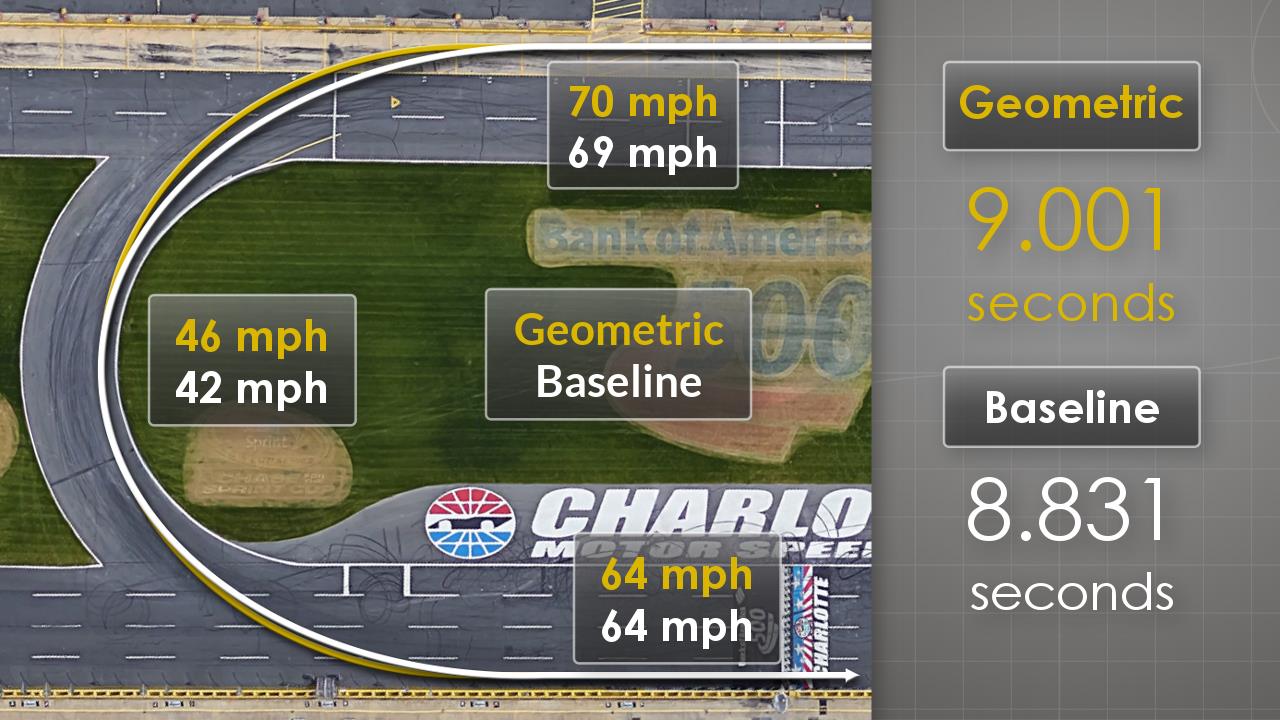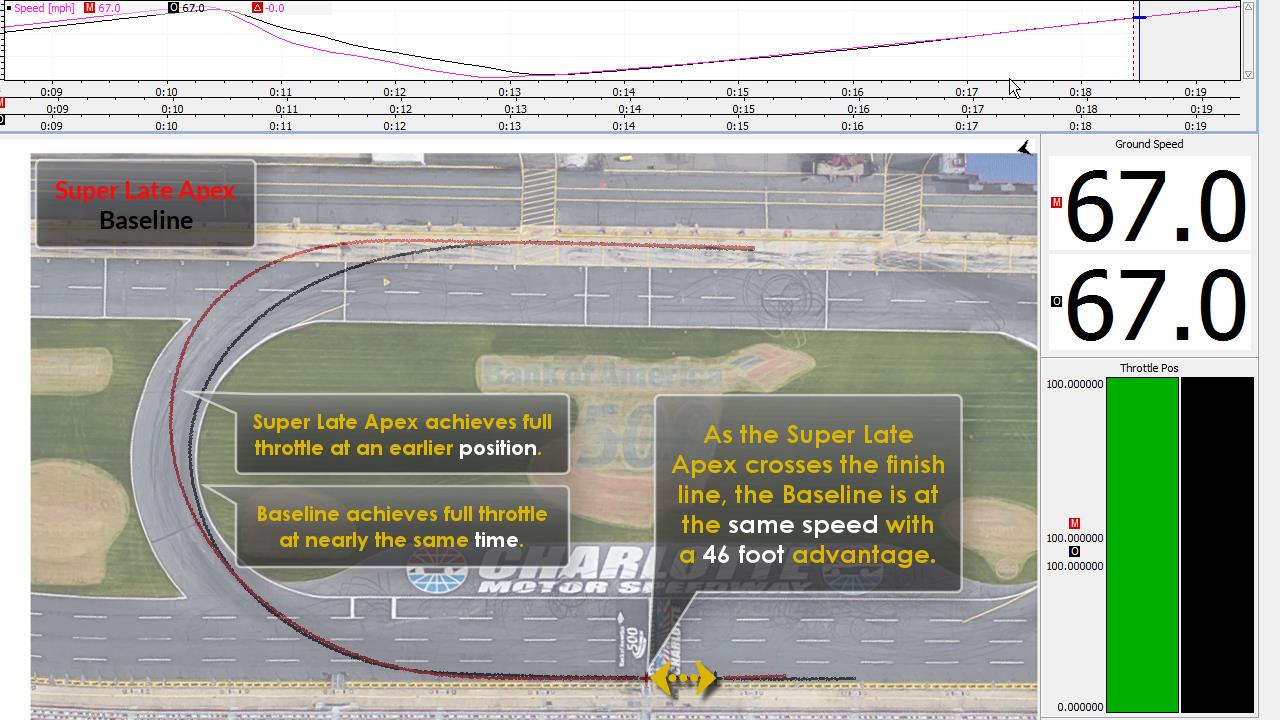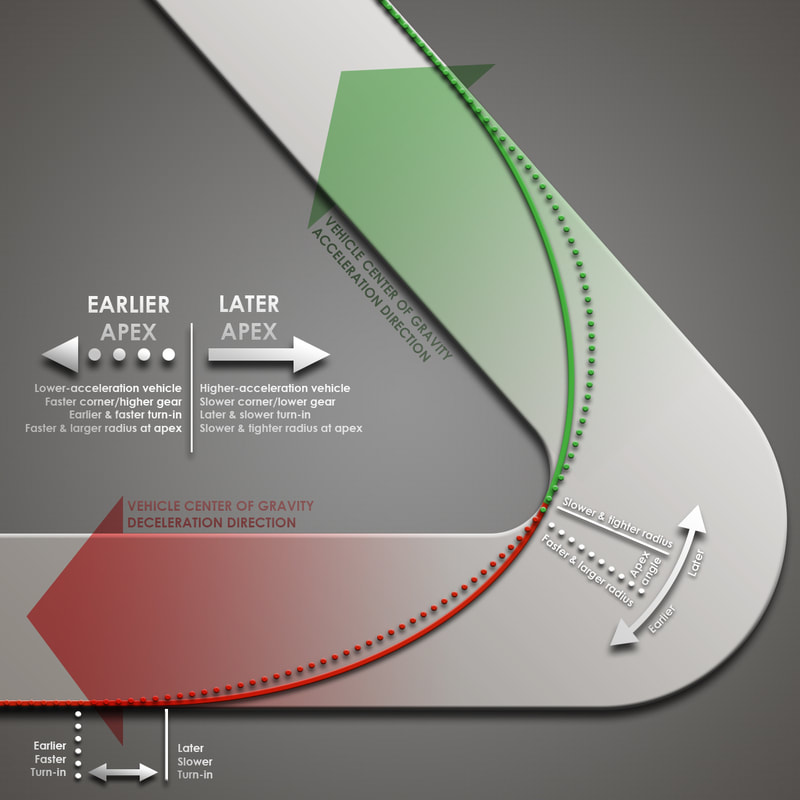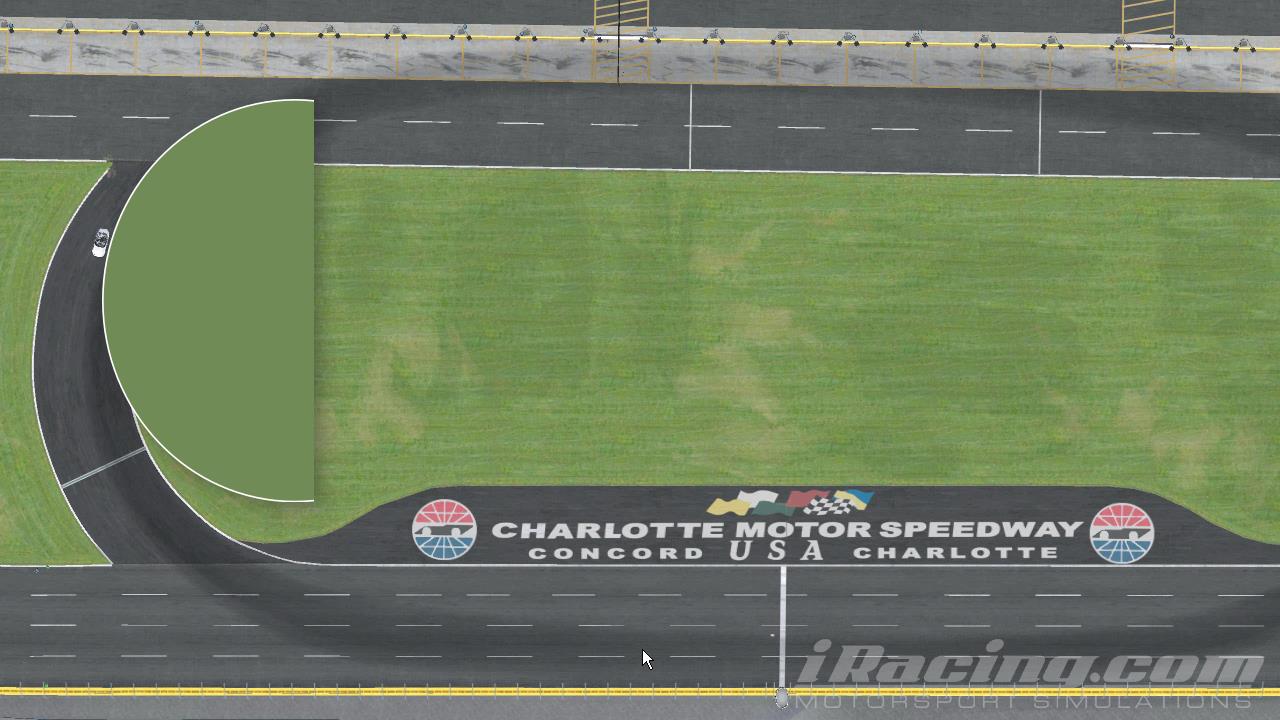/miTH/
noun
A widely held but false belief or idea.
I want to offer fair warning that some of these are not lightweight myths. You've read them in books, seen them in videos, and heard them from famous drivers. When first explaining the science behind these myths to some veteran drivers, you would have thought I kicked them in their carburetor. But watching that literal eureka moment when someone finally understands something after decades of performance driving makes it all worth it.
For that eureka moment to take place though, a driver must bring with them their most important learning tool, an open and critical thinking mind. To quote the famous leather trench coated figure "I can only show you the door. You're the one that has to walk through it." So after reading this article, I also recommend you watch our video Four Elements of a Perfect Corner for a more in depth look at the science behind these myths.
#1 - The Geometric line is the fastest Line through a single corner
#2 - You should Check your speed at corner exit
#3 - Get on the throttle as early as possible
This myth is related to the previous myth because driving a line with a super late apex will increase your exit speed. The problem is that this requires a longer line and the net result ends up being a slower time. Typically what happens with a super late apex is that while the acceleration point is earlier in position on track, it ends up being at nearly the same point in time as an ideal line. So while the super late apex line allows a higher speed at the corner exit position, at the same point in time, a car driving an ideal line will already be further down the track, but also already at that higher speed.
In comparison, the ideal acceleration point is going to be at an apex along the inside of the track. This is actually one good way to evaluate your driving. If the point you reach minimum speed where you begin accelerating is not along the inside of the track, you can potentially gain time by adjusting your line.
#4 - the Racing Line is the Same for All cars
This myth also most likely stems from the fact that the ideal line for practically every car will look very similar from trackside. The below illustration shows the spectrum of apexes that almost all cars will fall between. If you watched a Formula 1 car and a Ford Pinto go through a corner, the paths they took would be relatively close. To some it may look like there really is just one racing line. But although the paths will be close, they are not the same, and when you are searching for that last second, those small differences are where you will find that time.
#5 - The length of the straight before or after a corner affects the optimum line
An isolated corner is optimized the same way whether it leads into or follows a one foot or a one mile straight. This is similar to our previous myths because a key thing to understand is that the ideal line through a corner is the one that is the most efficient from a physics standpoint. There is no wasted force. While we've learned you can increase the speed that you enter the straightaway by biasing your acceleration point earlier, it is only at the expense of a slower time through the corner. The total time taken to complete the corner and straight will be higher than the combination of an ideal cornering line and straight because it is a less efficient use of force.
The biased cornering line is less efficient because you are essentially optimizing the corner for a false apex. In the illustration below you can see how the driver is trying to increase straightaway speed by accelerating earlier. Their minimum speed where they go to throttle is out in the middle of the track before an ideal apex would be. Actually however, all they've done is optimized the corner as if the inside of the track has been moved toward them by several feet. They've created a false apex and made the corner tighter than it really is. By reaching a minimum speed away from the inside of the track in an effort to increase speed either coming into or going out of a corner, this is exactly what's happening.
by Adam Brouillard







